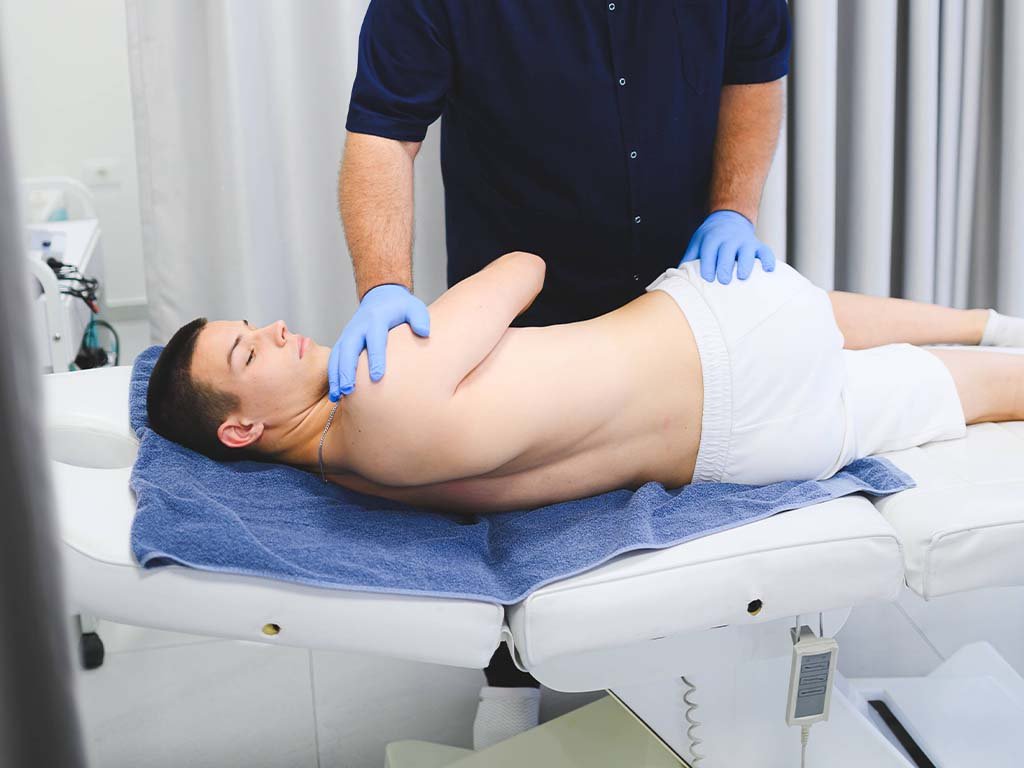- Mon-Fri: 13h - 21h
Saturday: appointment
- +382 67 834 191
+382 67 881 575 - dr.nenezic@gmail.com
- City Kvart L3-9
Podgorica, Montenegro
Chiropractic
- Home
- Chiropractic
Treatment packages
Contact Info
- City Kvart L3-9
Podgorica, Montenegro - +382 67 834 191
+382 67 881 575 - dr.nenezic@gmail.com
- Mon-Fri: 13h - 21h
Saturday: appointment
The origin of chiropractic
The origin of chiropractic is linked to the American doctor and founder of chiropractic medicine, Dr. Daniel David Palmer, in the United States at the end of the 19th century. His story of discovering chiropractic began on September 18, 1895, in Davenport. On that fateful day, Dr. Palmer was working in his office in Davenport.
He noticed a protrusion on the back of his patient named Harvey Lillard, who was deaf. Lillard told him that he had become deaf 17 years earlier after his back "cracked" in an accident where he slipped and hit his head.
Dr. Palmer decided to conduct an unconventional experiment and pressed the protrusion on Lillard's back. After performing this manipulation, Harvey Lillard suddenly began to hear sounds that had eluded him for years. That moment marked the beginning of chiropractic medicine.
Principles of chiropractic: After this event, Dr. Palmer further explored his new discovery and developed the principles of chiropractic. The basic idea of chiropractic is based on the belief that the spine is the central pillar of health and that disorders in the spine and nervous system can cause various health problems.
Dr. Palmer believed that "subluxations," minor deviations or dislocations of vertebrae, were the main cause of problems in the nervous system and the body in general. Therefore, he developed the technique of "chiropractic adjustments" to correct these subluxations and restore balance to the body.
Chiropractic: The Art of Maintaining a Healthy Spine
Chiropractic, often referred to as chiropractic medicine, is an alternative approach to healthcare medicine focused on the diagnosis, treatment, and prevention of musculoskeletal system disorders, especially those related to the spine. This branch of medicine is based on the belief that the proper functioning of the spine and nervous system plays a key role in maintaining overall health.
Methods of chiropractic:
Chiropractors use various techniques to focus on the health of the spine and body. The most famous technique is "chiropractic adjustment," where the chiropractor uses precise spinal manipulations to improve its position and function. This method aims to reduce pain, improve mobility, and increase the overall functionality of the body.
Benefits of Chiropractic:
1. Pain relief: Chiropractic is especially effective in reducing back, neck, and head pain. Patients suffering from chronic or acute pain often find relief after treatment.
2. Improved mobility: Through spinal adjustment, chiropractors help increase joint and muscle mobility, which is beneficial for sports performance and daily activities.
3. Injury prevention: Regular visits to a chiropractor can help prevent injuries and maintain spinal health.
4. Stress management: Chiropractic can help reduce stress as proper spinal alignment can improve the function of the nervous system and body relaxation.
5. Improved overall health: Chiropractors not only deal with the spine. They help in a holistic approach to health, so through spinal adjustment, overall physical and mental health can be improved.
The role of chiropractic in the modern healthcare system:
Chiropractic has become increasingly present in the modern healthcare system. Chiropractors often work in collaboration with other healthcare professionals to ensure comprehensive patient care. This holistic therapy is increasingly gaining recognition and support in the medical community.
Chiropractic is a therapy that offers many benefits and an approach to health beyond the traditional medical model. Through spinal adjustment and a holistic approach to health, chiropractors help patients achieve and maintain optimal health. Through their work, chiropractic remains relevant and a good option for those seeking better health and well-being.
Chiropractic and physiotherapy
Chiropractic and physiotherapy are two closely related disciplines in healthcare medicine that are often used together to achieve optimal recovery and rehabilitation of patients. As chiropractic directs its approach to the diagnosis and treatment of spinal and musculoskeletal system disorders, and physiotherapy focuses on improving body functionality and mobility, their integration can provide a holistic approach to treatment.
Chiropractic in the physiotherapy treatment plan:
Diagnosis and assessment: Chiropractors are trained to assess and diagnose problems in the musculoskeletal system, especially related to the spine. Through physical examination, assessment of spinal position, and mobility testing, they can determine specific disorders and dysfunctions. Spinal correction: Chiropractors apply chiropractic methods, which include precise manipulations of the spine and joints to improve their function. This can help reduce pain, improve spinal posture, and relax muscles.
Planning and monitoring: Once the diagnosis is established and chiropractic methods are performed, chiropractors collaborate with physiotherapists to develop an individual treatment plan. This plan includes therapeutic exercises, stretching, muscle strengthening, and other physiotherapeutic techniques.
Complementary treatments: Chiropractors and physiotherapists often use complementary treatments to enhance patient recovery. This may include the application of heat, cold, massage, electrical muscle stimulation, and other therapeutic techniques.
Benefits of collaboration between chiropractic and physiotherapy:
1. Targeted and comprehensive healthcare: Combining chiropractic methods with physiotherapy, patients receive comprehensive and targeted care that addresses not only symptoms but also the causes of problems in the musculoskeletal system.
2. Faster recovery: The collaboration of these two disciplines often results in faster recovery because problems are addressed in multiple ways.
3. Prevention of recurrent disorders: Through therapeutic exercises and education about proper body posture, patients learn how to prevent recurrent disorders and return problems.
4. Individual approach: Each patient has unique needs, so the integration of chiropractic and physiotherapy allows for the customization of treatments according to individual needs and goals.
Chiropractic and physiotherapy together offer a holistic and comprehensive approach to healthcare. By establishing diagnosis, spinal problems, therapeutic exercises, and complementary therapies, patients have the opportunity to accelerate their recovery, improve body functionality, and reduce pain. It is important to note that each treatment should be individual and conducted under the supervision of professionals, to achieve the best possible effect for the patient.
Shopping Cart
There is no item in your cart




